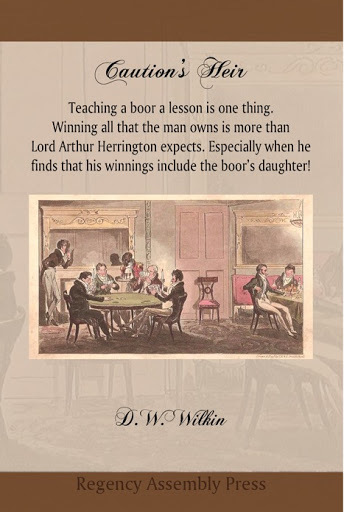D.W. Wilkin's Blog, page 30
September 2, 2016
Regency Personalities Series-Brooks’s
Regency Personalities Series
In my attempts to provide us with the details of the Regency, today I continue with one of the many period notables.
Brooks’s
March 1764-
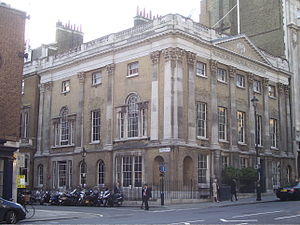
Brooks’s
In January 1762 a private society was established at 50 Pall Mall by Messrs. Boothby and James in response to having been blackballed for membership of White’s. This society then split to form the predecessors of both Brooks’s and Boodle’s. The club that was to become Brooks’s was founded in March 1764 by twenty-seven prominent Whig nobles including the Duke of Portland, the Duke of Roxburghe, Lord Crewe and Lord Strathmore. Charles James Fox was elected as a member the following year at the age of sixteen. The club premises at 49 Pall Mall was a former tavern owned by William Almack as was the neighbouring 50 Pall Mall where the society had previously met and so the club become simply known as Almack’s. These fashionable young men, known as Macaronis, would frequent the premises for the purposes of wining, dining and gambling.
In September 1777 William Brooks, a wine merchant and money lender who acted as Master, or manager, for Almack’s, commissioned Henry Holland to design and construct a purpose built clubhouse at a site on neighbouring St James’s Street. Paid for at Brooks’s own expense, the building was completed in October 1778 and all existing members of Almack’s were invited to join. Brooks’s gamble paid off as all existing members swiftly moved into the new building and the club then took on Brooks’s name as its own. Brooks himself however would not live long to enjoy this success, dying in poverty in 1782.
The new clubhouse was built of yellow brick and Portland stone in a Palladian style similar to Holland’s early country houses. The main suite of rooms on the first floor consisted of the Great Subscription Room, Small Drawing Room and the Card Room. The interiors are in neoclassical style, the Great Subscription Room having a segmental barrel vault ceiling. The interior of the building remained fairly unchanged until 1889 when neighbouring 2 Park Place, which had been purchased a few years before, was converted and adapted as part of Brooks’s.
The main historic attraction of Brooks’s was its gaming rooms. At several tables in one, gentlemen would stake fortunes on whist and hazard. Gambling all night was common; all day and all night, not unheard of. When the stakes far exceeded any ordinary expenses, all the club accounts were commonly deducted from winnings, so that no bills were rendered to members. Numerous eccentric bets were and are made in the Brooks’s betting book. One extraordinary entry from 1785 is “Ld. Cholmondeley has given two guineas to Ld. Derby, to receive 500 Gs whenever his lordship fucks a woman in a balloon one thousand yards from the Earth.” (However, there is no further indication that the bet was paid, or even how they would check it if it was claimed.)
Notable Members covered in the Regency Era’s timeframe
Horace Walpole, 4th Earl of Orford (1717–1797)
Edmund Burke (1729–1797)
Edward Gibbon (1737–1794)
William Cavendish-Bentinck, 3rd Duke of Portland (1738–1809)
Philip Francis (1740–1818)
John Ker, 3rd Duke of Roxburghe (1740–1804)
John Crewe, 1st Baron Crewe (1742–1829)
John FitzPatrick, 2nd Earl of Upper Ossory (1745–1818)
William Cavendish, 5th Duke of Devonshire (1748–1811)
Dudley Long North (1748–1829)
Charles James Fox (1749–1806)
William Windham (1750–1810)
Richard Brinsley Sheridan (1751–1816)
Hugh Fortescue, 1st Earl Fortescue (1753–1841)
Thomas Grenville (1755–1846)
Lord John Townshend (1757–1833)
Sir Scrope Bernard-Morland, 4th baronet (1758–1830)
William Pitt the Younger (1759–1806)
William Wilberforce (1759–1833)
Richard ‘Conversation’ Sharp (1759–1835)
Sir John Lade (1759–1838)
George FitzRoy, 4th Duke of Grafton (1760–1844)
Pascoe Grenfell (1761–1838)
The Prince of Wales, later George IV (1762–1830)
Prince Frederick, Duke of York and Albany (1763–1827)
Prince William, Duke of Clarence, later William IV (1765–1837)
William Henry Fremantle (1766–1850)
Lord William Russell (1767–1840)
Jean-Lambert Tallien (1767–1820)
John Campbell, 1st Baron Cawdor (1768–1821)
Francis Burdett (1770–1844)
David Ricardo (1772–1823)
Charles Watkin Williams-Wynn (1775–1850)
Alexander Raphael (1775/6-1850)
Richard Temple-Grenville, 1st Duke of Buckingham and Chandos (1776–1839)
Henry Brougham, 1st Baron Brougham and Vaux (1778–1868)
Beau Brummell (1778–1840)
John Campbell, 1st Baron Campbell (1779–1861)
William Lamb, 2nd Viscount Melbourne (1779–1848)
Thomas Moore (1779–1852)
James Evan Baillie (1781–1863)
Edward Ellice, the elder (1781–1863)
John Ward, 1st Earl of Dudley (1781–1833)
Granville Proby, 3rd Earl of Carysfort (1782–1868)
Hugh Fortescue, 2nd Earl Fortescue (1783–1861)
Henry Temple, 3rd Viscount Palmerston (1784–1865)
Daniel O’Connell (1785–1847)
George Parkyns, 2nd Baron Rancliffe (1785–1850)
Thomas Francis Kennedy (1788–1879)
William Arden, 2nd Baron Alvanley (1789–1849)
George Nugent-Grenville, 2nd Baron Nugent (1789–1850)
Robert Rolfe, 1st Baron Cranworth (1790–1868)
Charles Compton Cavendish, 1st Baron Chesham (1793–1863)
George Glyn, 1st Baron Wolverton (1797–1873)
David Salomons (1797–1873)
John Townshend, 4th Marquess Townshend (1798–1863)
Matthew Talbot Baines (1799–1860)
Michael Thomas Bass, Jr. (1799–1884)
George Keppel, 6th Earl of Albemarle (1799–1891)
Edward Smith-Stanley, 14th Earl of Derby (1799–1869)
Richard Bethell, 1st Baron Westbury (1800–1873)
Robert Vernon, 1st Baron Lyveden (1800–1873)
Fox Maule-Ramsay, 11th Earl of Dalhousie (1801–1874)
Robert Grosvenor, 1st Baron Ebury (1801–1893)
Charles Pelham Villiers (1802–1898)
Edward Stanley, 2nd Baron Stanley of Alderley (1802–1869)
Edward Bulwer-Lytton, 1st Baron Lytton (1803–1873)
Edward Horsman (1807–1876)
Lionel de Rothschild (1808–1879)


An Unofficial Guide to how to win the Scenarios of Rollercoaster Tycoon 3 Soaked and Wild
An Unofficial Guide to how to win the Scenarios of Rollercoaster Tycoon 3, Soaked! and WILD!
I have been a fan of this series of computer games since early in its release of the very first game. That game was done by one programmer, Chris Sawyer, and it was the first I recall of an internet hit. Websites were put up in dedication to this game where people showed off their creations, based on real amusement parks. These sites were funded by individuals, an expense that was not necessarily as cheap then as it is now. Nor as easy to program then as it might be to build a web page now.
Prima Books released game guides for each iteration of the game, Rollercoaster Tycoon 1, Rollercoaster Tycoon 2 and Rollercoaster Tycoon 3 (RCT3) but not for the expansion sets. And unlike the first two works, the third guide was riddled with incorrect solutions. As I played the game that frustrated me. And I took to the forums that Atari, the game publisher hosted to see if I could find a way to solve those scenarios that the Prima Guide had written up in error. Not finding any good advice, I created my own for the scenarios that the “Official” Guide had gotten wrong.
Solutions that if you followed my advice you would win the scenario and move on. But if you followed the
“Official” version you would fail and not be able to complete the game. My style and format being different than the folks at Prima, I continued for all the Scenarios that they had gotten right as well, though my solutions cut to the chase and got you to the winner’s circle more quickly, more directly.
My contributions to the “Official” Forum, got me a place as a playtester for both expansions to the game, Soaked and Wild. And for each of these games, I wrote the guides during the play testing phase so all the play testers could solve the scenarios, and then once again after the official release to make changes in the formula in case our aiding to perfect the game had changed matters. For this, Atari and Frontier (the actual programmers of the game) placed me within the game itself.
And for the longest time, these have been free at the “Official” Forums, as well as my own website dedicated to the game. But a short time ago, I noticed that Atari, after one of its bankruptcies had deleted their forums. So now I am releasing the Guide for one and all. I have added new material and it is over 150 pages, for all three games. It is available for the Kindle at present for $7.99. It is also available as a trade paperback for just a little bit more.
You can also find this at Smashwords, iBooks, Kobo and Barnes and Noble
(Click on the picture to purchase)
Not only are all 39 Scenarios covered, but there are sections covering every Cheat Code, Custom Scenery, the famous Small Park Competition, the Advanced Fireworks Editor, the Flying Camera Route Editor which are all the techniques every amusement park designer needs to make a fantastic park in Rollercoaster Tycoon 3.
Scenarios for RCT 3
1) Vanilla Hills
2) Goldrush
3) Checkered Flag
4) Box Office
5) Fright Night
6) Go With The Flow
7) Broom Lake
8) Valley of Kings
9) Gunslinger
10) Ghost Town
11) National Treasure
12) New Blood
13) Island Hopping
14) Cosmic Crags
15) La La Land
16) Mountain Rescue
17) The Money Pit
18) Paradise Island
Scenarios for Soaked!
1) Captain Blackheart’s Cove
2) Oasis of Fun
3) Lost Atlantis
4) Monster Lake
5) Fountain of Youth
6) World of the Sea
7) Treasure Island
8) Mountain Spring
9) Castaway Getaway
Scenarios for WILD!
1) Scrub Gardens
2) Ostrich Farms Plains
3) Egyptian Sand Dance
4) A Rollercoaster Odyssey
5) Zoo Rescue
6) Mine Mountain
7) Insect World
8) Rocky Coasters
9) Lost Land of the Dinosaurs
10) Tiger Forest
11) Raiders of the Lost Coaster
12) Saxon Farms


September 1, 2016
Regency Personalities Series-Alan Legge Gardner 3rd Baron Gardner
Regency Personalities Series
In my attempts to provide us with the details of the Regency, today I continue with one of the many period notables.
Alan Legge Gardner 3rd Baron Gardner
29 January 1810 – 2 November 1883
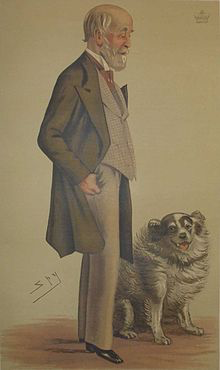
Alan Legge Gardner
Alan Legge Gardner 3rd Baron Gardner r was the son of Admiral Alan Gardner, 2nd Baron Gardner. A viscountcy was to be conferred on his father in 1815, but he died before the patent had passed the Great Seal and the title was never given to his son. He did, however, manage to get his father’s barony passed down to him instead of his father’s other son, Mr Fenton Gardner, by establishing that Fenton was illegitimate.
In his youth, Gardner was a member of the literary salon established by the Countess of Blessington and the Count D’Orsay. He was also a celebrated sportsman. He sat on the Whig benches in the House of Lords and served in the Whig administration of Lord Melbourne as a Lord-in-Waiting (government whip in the House of Lords) from 1837 to 1841.
Lord Gardner married firstly Frances Margaret Hughes (12 October 1814 – 3 December 1847) in 1835. The marriage was childless. After her death he married secondly the actress Julia Sarah Hayfield Fortescue (1817 – 3 November 1899 Brighton), daughter of Edward E. T. Fortescue, in December 1848 at St George’s, Hanover Square, London. They had several children born before and after their marriage; as his former mistress, she was unacceptable in Victorian high society.
His son Herbert Gardner, born two years before his parents’ wedding, became a Liberal politician and was created Baron Burghclere in 1895. One of Lord Gardner’s legitimate daughters, the Hon. Florence (7 Feb 1853 -3 Aug 1934), was the wife of William Onslow, 4th Earl of Onslow, sometime Governor-General of New Zealand; a granddaughter Lady Dorothy Onslow married Edward Wood, 1st Earl of Halifax and became Vicereine of India. Gardner died in November 1883, aged 73, when his titles became dormant. Lady Gardner died in 1899.
a son (b 1842), possibly Col. Alan Coulston Gardner (d 1907); he married and had issue 2 sons, but was illegitimate so could not inherit the 1798 barony.
a son (b 1843)
Herbert Gardner (1846-1921), who married Lady Winifred Byng, née Herbert, daughter of the 4th Earl of Carnarvon, and had issue 4 daughters. One daughter Evelyn was the first wife of Evelyn Waugh and was thus known as “She-Evelyn”. Another daughter married Geoffrey Hope-Morley, 2nd Baron Hollenden.
Hon. Florence Coulston Gardner (7 Feb 1853 -3 Aug 1934), married William Onslow, 4th Earl of Onslow, sometime Governor-General of New Zealand, and had issue.
Hon. Evelyn Coulston Gardner (1856–1902), married 1881 William Fuller Maitland and had issue


Space Opera Books presents ECO Agents:Save The Planet a Young Adult Adventure
First ECO Agents book available
Those who follow me for a long time know that I also write in other fields aside from Regency Romance and the historical novels I do.
A few months ago, before the end of last year and after 2011 NaNoWriMo, (where I wrote the first draft of another Regency) I started work on a project with my younger brother Douglas (All three of my brothers are younger brothers.)
The premise, as he is now an educator but once was a full on scientist at the NHI and FBI (Very cloak and dagger chemistry.) was that with the world having become green, and more green aware every week, why not have a group of prodigies, studying at a higher learning educational facility tackle the ills that have now begun to beset the world.
So it is now released. We are trickling it out to the major online channels and through Amazon it will be available in trade paperback. Available at Amazon for your Kindle, or your Kindle apps and other online bookstores. For $5.99 you can get this collaboration between the brothers Wilkin. Or get it for every teenager you know who has access to a Kindle or other eReader.
Barnes and Noble for your Nook Smashwords iBookstore for your Apple iDevices Amazon for your Kindle
Five young people are all that stands between a better world and corporate destruction. Parker, Priya, JCubed, Guillermo and Jennifer are not just your average high school students. They are ECOAgents, trusted the world over with protecting the planet.
Our Earth is in trouble. Humanity has damaged our home. Billionaire scientist turned educator, Dr. Daniel Phillips-Lee, is using his vast resources to reverse this situation. Zedadiah Carter, leader of the Earth’s most powerful company, is only getting richer, harvesting resources, with the aid of not so trustworthy employees.
When the company threatens part of the world’s water supply, covering up their involvement is business as usual. The Ecological Conservation Organization’s Academy of Higher Learning and Scientific Achievement, or simply the ECO Academy, high in the hills of Malibu, California overlooking the Pacific Ocean, is the envy of educational institutions worldwide.
The teenage students of the ECO Academy, among the best and brightest the planet has to offer, have decided they cannot just watch the world self-destruct. They will meet this challenge head on as they begin to heal the planet.
Feedback
If you have any commentary, thoughts, ideas about the book (especially if you buy it, read it and like it
August 31, 2016
Regency Personalities Series-James Spedding
Regency Personalities Series
In my attempts to provide us with the details of the Regency, today I continue with one of the many period notables.
James Spedding
28 June 1808,– 9 March 1881
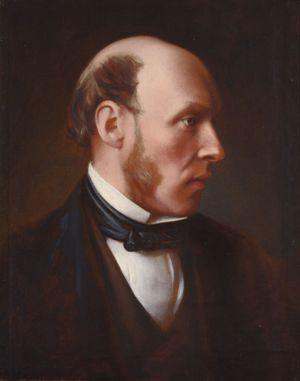
James Spedding
James Spedding was born in Cumberland, the younger son of a country squire, and was educated at Bury St Edmunds and Trinity College, Cambridge; where he took a second class in the classical tripos, was a Cambridge Apostle, and was junior optime in mathematics in 1831. In 1835 he entered the Colonial Office, but he resigned this post in 1841. In 1842 he was secretary to Lord Ashburton on his American mission, and in 1855 he became secretary to the Civil Service Commission; but from 1841 onwards he was constantly occupied in his researches into Bacon’s life and philosophy. On 1 March 1881 he was knocked down by a cab in London, and on the 9th he died of erysipelas.
Spedding’s major edition of Bacon’s works was begun in 1847 in collaboration with Robert Leslie Ellis and Douglas Denon Heath. In 1853 Ellis had to leave the work to Spedding, with the occasional assistance of Heath, who edited most of the legal writings. The Works were published in 1857–1859 in seven volumes, followed by the Life and Letters (1861–1874). Taken together these works contain practically all the material which exists in connection with the subject, collected and weighed with care and impartiality.
In 1853, Delia Bacon approached Spedding with her belief that Francis Bacon was instrumental in the authorship of Shakespeare’s works (see Shakespearean authorship). Spedding’s initial reaction was “speechless astonishment;” but on later occasions he clearly expressed his disfavor of the Baconian hypothesis, and explained some of the common-sense reasons against it. Spedding was the first person to recognize the hand of John Fletcher in Shakespeare’s Henry VIII—his “Who Wrote Henry VIII?” appeared in 1850; he was also one of the first people to perceive Shakespeare’s hand in the additions to Sir Thomas More.
Spedding humorously emphasized his devotion to Bacon in the title of one of his non-Baconian works, Reviews and Discussions, Literary, Political and Historical, not relating to Bacon (1879).


Space Opera Books Presents A Trolling We Will Go Omnibus:The Latter Years
A Trolling We Will Go Omnibus:The Latter Years
Not only do I write Regency and Romance, but I also have delved into Fantasy.
The Trolling series, is the story of a man, Humphrey. We meet him as he has left youth and become a man with a man’s responsibilities. He is a woodcutter for a small village. It is a living, but it is not necessarily a great living. It does give him strength, muscles.
We follow him in a series of stories that encompass the stages of life. We see him when he starts his family, when he has older sons and the father son dynamic is tested.
We see him when his children begin to marry and have children, and at the end of his life when those he has loved, and those who were his friends proceed him over the threshold into death.
All this while he serves a kingdom troubled by monsters. Troubles that he and his friends will learn to deal with and rectify.
Here are the last two books together as one longer novel.
Trolling, Trolling, Trolling Fly Hides! and We’ll All Go a Trolling.
Available in a variety of formats.
For $5.99 you can get this fantasy adventure.
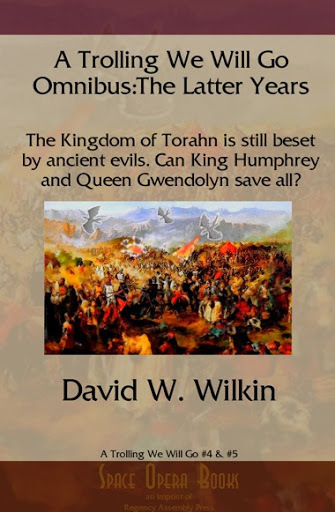
Barnes and Noble for your Nook
The stories of Humphrey and Gwendolyn. Published separately in: Trolling, Trolling, Trolling Fly Hides! and We’ll All Go a Trolling. These are the tales of how a simple Woodcutter who became a king and an overly educated girl who became his queen helped save the kingdom of Torahn from an ancient evil. Now with the aid of their children and their grandchildren.
Long forgotten is the way to fight the Trolls. Beasts that breed faster than rabbits it seems, and when they decide to migrate to the lands of humans, their seeming invulnerability spell doom for all in the kingdom of Torahn. Not only Torahn but all the human kingdoms that border the great mountains that divide the continent.
The Kingdom of Torahn has settled down to peace, but the many years of war to acheive that peace has seen to changes in the nearby Teantellen Mountains. Always when you think the Trolls have also sought peace, you are fooled for now, forced by Dragons at the highest peaks, the Trolls are marching again.
Now Humphrey is old, too old to lead and must pass these cares to his sons. Will they be as able as he always has been. He can advise, but he does not have the strength he used to have. Nor does Gwendolyn back in the Capital. Here are tales of how leaders we know and are familiar with must learn to trust the next generation to come.
Feedback
If you have any commentary, thoughts, ideas about the book (especially if you buy it, read it and like it
August 30, 2016
Regency Personalities Series-Sir Herbert Croft 5th Baronet
Regency Personalities Series
In my attempts to provide us with the details of the Regency, today I continue with one of the many period notables.
Sir Herbert Croft 5th Baronet
1 November 1751 – 26 April 1816
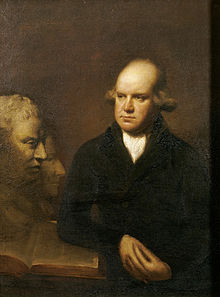
Herbert Croft
Sir Herbert Croft 5th Baronet was born at Dunster Park, Berkshire, son of the son of Herbert Croft and Elizabeth Young. He matriculated at University College, Oxford, in March 1771, and was subsequently entered at Lincoln’s Inn. He was called to the bar, but in 1782 returned to Oxford with a view to preparing for holy orders. In 1786 he received the vicarage of Prittlewell, Essex, but he remained at Oxford for some years accumulating materials for a proposed English dictionary. Croft spent years on this project and he also took on preparation work made by Joseph Priestley. However, despite compiling thousands of entries not found in other dictionaries, the project was finally abandoned because of a failure to find sufficient subscribers. He was twice married, and on the day after his second wedding day he was imprisoned at Exeter for debt.
He then retired to Hamburg, and two years later his library was sold. He had succeeded in 1797 to the baronetcy, but not to the estates, of a distant cousin, Sir John Croft, 4th Baronet. He returned to England in 1800, but went abroad once more in 1802. He lived near Amiens at a house owned by Lady Mary Hamilton, the daughter of Alexander Leslie, 5th Earl of Leven. Later he removed to Paris, where he died on 26 April 1816.
In some of his numerous literary enterprises he had the help of Charles Nodier. Croft wrote the Life of Edward Young inserted in Samuel Johnson’s Lives of the Poets.
In 1780 he published Love and Madness, a Story too true, in a series of letters between Parties whose names could perhaps be mentioned were they less known or less lamented. This book, which passed through seven editions, narrates the passion of the soldier-turned-clergyman James Hackman for Martha Ray, mistress of the earl of Sandwich, who was shot by her lover as she was leaving Covent Garden in 1779 (see the Case and Memoirs of the late Rev. Mr James Hackman, 1779).
Love and Madness has permanent interest because Croft inserted, among other miscellaneous matter, information about Thomas Chatterton gained from letters which he obtained from the poet’s sister, Mrs Newton, under false pretences, and used without payment. Robert Southey, when about to publish an edition of Chatterton’s works for the benefit of his family, published (November 1799) details of Croft’s proceedings in the Monthly To this attack Croft wrote a reply addressed to John Nichols in the Gentleman’s Magazine, and afterwards printed separately as Chatterton and Love and Madness … (1800).
This tract evades the main accusation, and contains much abuse of Southey. Croft, however, supplied the material for the exhaustive account of Chatterton in Andrew Kippis’s Biographia Britannica (vol. iv., 1789).
In 1788 he addressed a letter to William Pitt on the subject of a new dictionary. He criticized Samuel Johnson’s efforts, and in 1790 he claimed to have collected 11,000 words used by excellent authorities but omitted by Johnson. Two years later he issued proposals for a revised edition of Johnson’s Dictionary, but subscribers were lacking and his 200 vols. of manuscript remained unused. Croft was a good scholar and linguist, and the author of some curious books in French.
Charles Nodier was working as a secretary to the elderly Croft and his platonic friend, the novelist Lady Mary Hamilton in France. During this time Nodier translated Hamilton’s book Munster Village and helped her write La famille du duc de Popoli or The Duc de Popoli which was published in 1810.
The Love Letters of Mr H. and Miss R. 1775–1779 were edited from Croft’s book by Mr Gilbert Burgess. See also John Nichols’s Illustrations … (1828), v. 202–218.


An Unofficial Guide to how to win the Scenarios of Soaked the 1st Expansion for Rollercoaster Tycoon 3
An Unofficial Guide to how to win the Scenarios of Soaked
I have been a fan of this series of computer games since early in its release of the very first game. That game was done by one programmer, Chris Sawyer, and it was the first I recall of an internet hit. Websites were put up in dedication to this game where people showed off their creations, based on real amusement parks. These sites were funded by individuals, an expense that was not necessarily as cheap then as it is now. Nor as easy to program then as it might be to build a web page now.
Prima Books released game guides for each iteration of the game, Rollercoaster Tycoon 1, Rollercoaster Tycoon 2 and Rollercoaster Tycoon 3 (RCT3) but not for the expansion sets. And unlike the first two works, the third guide was riddle with incorrect solutions. As I played the game that frustrated me. And I took to the forums that Atari, the game publisher hosted to see if I could find a way to solve those scenarios that the Prima Guide had written up in error. Not finding any good advice, I created my own for the scenarios that the “Official” Guide had gotten wrong.
Solutions that if you followed my advice you would win the scenario and move on. But if you followed the “Official” version you would fail and not be able to complete the game. My style and format being different than the folks at Prima, I continued for all the Scenarios that they had gotten right as well, though my solutions cut to the chase and got you to the winner’s circle more quickly, more directly.
My contributions to the “Official” Forum, got me a place as a playtester for both expansions to the game, Soaked and Wild. And for each of these games, I wrote the guides during the play testing phase so all the play testers could solve the scenarios, and then once again after the official release to make changes in the formula in case our aiding to perfect the game had changed matters. For this, Atari and Frontier (the actual programmers of the game) placed me within the game itself.
And for the longest time, these have been free at the “Official” Forums, as well as my own website dedicated to the game. But a short time ago, I noticed that Atari, after one of its bankruptcies had deleted their forums. So now I am releasing the Guide for one and all. I have added new material and it is near 100 pages, just for the first of the three games. It is available for the Kindle at present for $2.99.
(Click on the picture to purchase)
Not only are all 9 Scenarios covered, but there are sections covering every Cheat Code, Custom Scenery, the famous Small Park Competition, the Advanced Fireworks Editor, the Flying Camera Route Editor which are all the techniques every amusement park designer needs to make a fantastic park in Rollercoaster Tycoon 3.
Scenarios for Soaked!
1) Captain Blackheart’s Cove
2) Oasis of Fun
3) Lost Atlantis
4) Monster Lake
5) Fountain of Youth
6) World of the Sea
7) Treasure Island
8) Mountain Spring
9) Castaway Getaway


August 29, 2016
Regency Personalities Series-George Ashburnham 3rd Earl of Ashburnham
Regency Personalities Series
In my attempts to provide us with the details of the Regency, today I continue with one of the many period notables.
George Ashburnham 3rd Earl of Ashburnham
25 December 1760 – 27 October 1830
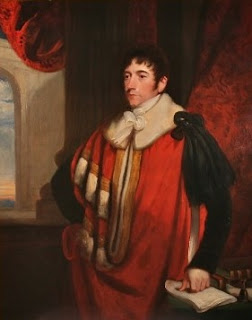
George Ashburnham 3rd Earl of Ashburnham
George Ashburnham 3rd Earl of Ashburnham was the son of the 2nd Earl of Ashburnham and the former Elizabeth Crowley, being styled Viscount St Asaph from birth, and was baptised on 29 January 1761 at St George’s, Hanover Square, London, with King George III, the Duke of Newcastle and the Dowager Princess of Wales as his godparents.
In 1780, Lord St Asaph graduated from Trinity College, Cambridge, with a Master of Arts degree.
He married, firstly, the Hon. Sophia Thynne (19 December 1763 – 9 April 1791), daughter of the 3rd Viscount Weymouth (later the 1st Marquess of Bath), on 28 August 1784. They had four children:
George Ashburnham, Viscount St Asaph (8 October 1785 – 7 June 1813)
Lady Elizabeth Sophia Ashburnham (16 September 1786 – 13 March 1879)
The Hon. Sophia Ashburnham (29 January 1788 – 17 June 1807)
Ensign The Hon. John Ashburnham (3 June 1789 – 1810) (served in the Coldstream Guards in the Napoleonic Wars; drowned whilst returning from Portugal)
He married, secondly, Lady Charlotte Percy (3 June 1776 – 26 November 1862) on 25 July 1795. She was a daughter of the 1st Earl of Beverley, and a sister of George Percy, 5th Duke of Northumberland. They had 13 children:
The Hon. William Ashburnham (19 January 1797 – 1797) (died an infant)
Bertram Ashburnham, 4th Earl of Ashburnham (23 November 1797 – 22 June 1878)
The Hon. Percy Ashburnham (22 November 1799 – 25 January 1881)
Lady Charlotte Susan Ashburnham (23 February 1801 – 26 April 1865)
Lady Theodosia Julia Ashburnham (27 March 1802 – 22 August 1887)
The Hon. Charles Ashburnham (23 March 1803 – 22 December 1848)
Lady Georgiana Jemima Ashburnham (11 May 1805 – May 1882) (mother of Algernon Mitford)
Lady Jane Henrietta Ashburnham (19 July 1809 – 26 November 1896) (mother of the poet Swinburne)
Lady Katherine Frances Ashburnham (31 March 1812 – 6 April 1839)
Lady Eleanor Isabel Bridget Ashburnham (28 July 1814 – 6 March 1895)
General The Hon. Thomas Ashburnham, CB (1816 – 2 March 1872)
Lady Mary Agnes Blanche Ashburnham (23 January 1816 – 22 April 1899)
The Hon. Reginald Ashburnham (1819 – 5 March 1830)
Lord St Asaph was summoned to the House of Lords by writ in acceleration as 5th Baron Ashburnham in 1804. He held the office of Trustee of the British Museum between 1810 and 1830. In 1812 he succeeded his father as 3rd Earl of Ashburnham. On his death he was survived by his fourth (but eldest surviving) son, Bertram, Viscount St. Asaph.
His main family home was at Ashburnham Place in Sussex, which belonged to the family from the late 11th century until 1953. The Ashburnham archive is held by the East Sussex Record Office.


Caution’s Heir from Regency Assembly Press-Now available everywhere!
Caution’s Heir is now available at all our internet retailers and also in physical form as well
The Trade Paperback version is now available for purchase here @ $15.99 (but as of this writing, it looks like Amazon has still discounted it 10%)
Caution’s Heir is also available digitally for $4.99 @ the iBookstore, Amazon, Barnes and Noble, Kobo and Smashwords.
The image for the cover is a Cruikshank, A Game of Whist; Tom & Jerry among the ‘Swell Broad Coves.’ Tom and Jerry was a very popular series of stories at the time.
Teaching a boor a lesson is one thing.
Winning all that the man owns is more than Lord Arthur Herrington expects. Especially when he finds that his winnings include the boor’s daughter!
The Duke of Northampshire spent fortunes in his youth. The reality of which his son, Arthur the Earl of Daventry, learns all too well when sent off to school with nothing in his pocket. Learning to fill that pocket leads him on a road to frugality and his becoming a sober man of Town. A sober but very much respected member of the Ton.
Lady Louisa Booth did not have much hope for her father, known in the country for his profligate ways. Yet when the man inherited her gallant uncle’s title and wealth, she hoped he would reform. Alas, that was not to be the case.
When she learned everything was lost, including her beloved home, she made it her purpose to ensure that Lord Arthur was not indifferent to her plight. An unmarried young woman cast adrift in society without a protector. A role that Arthur never thought to be cast as. A role he had little idea if he could rise to such occasion. Yet would Louisa find Arthur to be that one true benefactor? Would Arthur make this obligation something more? Would a game of chance lead to love?
Today, the iBookstore is added, HERE
Get for your Kindle, Here
In Trade Paperback, Here
Digitally from Smashwords, Here
For your Sony Kobo, Here
Or for your Nook, Here
From our tale:
Chapter One
St. Oswald’s church was bleak, yet beautiful all in one breath. 13th century arches that soared a tad more than twenty feet above the nave provided a sense of grandeur, permanence and gravitas. These prevailed within, while the turret-topped tower without, once visible for miles around now vied with mature trees to gain the eye of passers-by.
On sunny days stain-glass windows, paid for by a Plantagenet Baron who lived four hundred years before and now only remembered because of this gift, cast charming rainbow beams across the inner sanctum. And on grey overcast days ghostly shadows danced along the aisle.
As per the custom of parish churches the first three pews were set-aside for the gentry. On this day the second pew, behind the seat reserved for the Marquess of Hroek, who hadn’t attended since the passing of his son and heir, was Louisa Booth his niece and her companion Mrs Bottomworth.
Mrs Bottomworth was a stocky matron on the good side of fifty. Barely on the good side of fifty. But one would not say that was an unfortunate thing for she wore her years well and kept her charge free of trouble. Mrs Bottomworth’s charge was an only child, who would still have been in the schoolroom excepting the fact of the death of her mother some years earlier. This had aged the girl quickly, and made her hostess to her father’s household. The Honourable Hector Booth, third son of the previous Marquess, maintained a modest house on his income of 300 pounds. That was quite a nice sum for just the man and one daughter, with but five servants. They lived in a small, two floor house with four rooms. It should be noted that this of course left two bedchambers that were not inhabited by family members. As the Honourable Mr Booth saved his excess pounds for certain small vices that confined themselves with drink and the occasional wager on a horse, these two rooms were seldom opened.
Mrs Bottomworth had thought to make use of one of the empty rooms when she took up her position, but the Honourable Hector Booth advised and instructed her to share his daughter’s room. For the last four years this is what she had done. When two such as these shared a room, it was natural that they would either become best of friends, or resent each other entirely. Happily the former occurred as Louisa was in need of a confidant to fill the void left in her mother’s absence, and Mrs Bottomworth had a similar void as her two daughters had grown and gone on to make their own lives.
The Honourable Mr Booth took little effort in concerning himself with such matters as he was ever about his brother’s house, or ensconced in a comfortable seat at either the local tavern or the Inn. If those locations had felt he was too warm for them, he would make a circuit of what friends and acquaintances he had in the county. The Honourable Mr Booth would spend an hour or two with a neighbour discussing dogs or hunters, neither of which he could afford to keep, though he did borrow a fine mount of his brother to ride to the hunt. The Marquess took little notice, having reduced his view of the world by degrees when first his beloved younger brother who was of an age between the surviving Honourable Mr Booth had perished shortly after the Marquess’ marriage. Their brother had fallen in the tropics of a fever. Then the Marquess had lost his second child, a little girl in her infancy, his wife but a few years after, and most recently his son and heir to the wars with Napoleon.
This caused the Honourable Mr Booth to be heir to Hroek, a situation that had occurred after he had lost his own wife. With that tragedy, Mr Booth had found more time to make friends with all sorts of new bottles, though not to a degree that it was considered remarkable beyond a polite word. Mr Booth was not a drunkard. He was confronting his grief with a sociability that was acceptable in the county.
Louisa, however, was cast further adrift. No father to turn to. No uncle who had been the patriarch of the family her entire life. And certainly now no feminine examples to follow but her companion and governess, Mrs Bottomworth. That Mrs Bottomworth was an excellent choice for the task was more due to acts of the Marquess, still able to think clearly at the time she was employed, than to the Honourable Mr Booth. Mr Booth was amenable to any suggestion of his elder brother for that man controlled his purse, and as Mr Booth was consumed with grief, while the Marquess had adapted to various causes of grief prior to the final straw of his heir’s death, the Marquess of Hroek clearly saw a solution to what was a problem.
Now in her pew, where once as a young girl she had been surrounded by her cousins, parents, uncles and aunt, she sat alone except for her best of friends. Louisa was full of life in her pew, her cheeks a shade of pink that contrasted with auburn hair, which glistened as sunlight that flowed though the coloured panes of glass touched it from beneath her bonnet. Blue eyes shown over a small straight nose, her teeth were straight, though two incisors were ever so slightly bigger than one would attribute to a gallery beauty painted by Sir Thomas Lawrence.
She was four inches taller than five feet, so rather tall for a young woman, but her genes bred true, and many a girl of the aristocracy was slightly taller than those women who were of humbler origins. Her back was straight and for an observant man, of which there were some few in the county, her figure might be discussed. The wrath though of her uncle the Marquess would not wish to be bourne should it be found out that her form had become a topic amongst the young men. Noteworthy though was that she had a figure that men thought inspiring enough to tempt that wrath, and think on it. A full bosom was high on her chest, below her heart shaped face. She was lean of form, though her hips flared just enough that one could see definition in her torso. Certainly a beauty Sir Thomas’ brushes would wish the honour to meet.
The vicar Mr Spotslet had at one time in his early days in the community, discussed the Sunday sermons with the Marquess. Mr Spotslet had enjoyed long discussions of theology, philosophy, natural history and the holy writ that were then thoughtfully couched in terms to be made accessible by the parish. The lassitude that had overtaken the Marquess had caused those interviews to become shortened and infrequent and as such the sermons suffered, as many were wont to note. There had been dialogues that Mr Spotslet had engaged in with the attendees of his masses. Now he seemed to have lost his way and delivered soliloquies.
This day Mr Spotslet indulged in a speech that talked to the vices of gambling. The local sports, of which the Honourable Mr Booth was an intimate, had raced their best through the village green the previous Wednesday for but a prize of one quid, and this small bet had caused pandemonium when Mrs McCaster had fallen in the street with her washing spread everywhere and trampled by the horses. Not much further along the path, Mr Smith the grocer’s delivery for the vicar himself was dropped by the boy and turned into detritus as that too was stampeded over. A natural choice for a sermon, yet only two of the culprits were in attendance this day. The rest had managed to find reasons to avoid the Mass.
Louisa squirmed a little in her seat the moment she realised that her father had been one of the men that the sermon was speaking of. Was she not the centre of everyone’s gaze at such a time? Her father having refused to attend for some years, and her uncle unable due to his illness. She was the representative of the much reduced family. Not only was it expected that the parish would look to her as the Booth of Hroek, but with her father’s actions called to the attentions of all, it was natural that they look at her again. This time in a light that did not reflect well on her father and she knew that she had no control over that at all.
Mrs Bottomworth, who might have been lightly resting her eyes, Louisa would credit her in such a generous way, came to tensing at the mention of the incident. Louisa did not want to bring her friend to full wakefulness, but Mrs Bottomworth realised what was occurring and the direction that the sermon was taking. Louisa’s companion took her hand and patted it reassuringly.
“Perhaps a social call on Lady Walker?” Mrs Bottomworth suggested as they walked back to the house after services. The house which sat just within the estate boundaries was four hundred feet off the main bridal way that led to Hroek Castle. A small road had been cleared from the gatehouse to the house that Mr Booth now maintained, and this the two women travelled.
Louisa generally appreciated visits such as this as she had gotten older, and certainly several of the adults in the neighbourhood showed a kindly interest in her education and the development of her social manners. “I think I shall go to the castle and read to my uncle.” A task that she had done each day of the last fortnight but one.
“We have not talked, but you and the Marquess had an interview with the doctors.” Mrs Bottomworth had tried to comfort her charge after that, but Louisa had waved her hand and gone to sit quietly under a yew tree that had a grand vista of the park leading to Hroek Castle.
“Uncle will be most lucky if he should be with us come Michaelmas.”
“That will be a sad day when we lose such a friend.” These were words of comfort. Mrs Bottomworth had been well encouraged in her charge by the Marquess but one could not say that they interacted greatly with one another. The Marquess ensured that his brother heeded the suggestions and advisements of Mrs Bottomworth as the Honourable Mr Booth left to his own devices would have kept his daughter in the nursery and would have forgotten to send a governess to provide her with instruction.
“Indeed, my uncle may not have been one of the great men of England, but he is well regarded in the county.” Often with that statement followed the next, “Warmly remembered is it when the Prince Regent came and stayed for a fortnight of sport and entertainment.” This had been many years before, and certainly before any of the tragedies beset the line of the Booths.
“Yes, I have heard it said with great earnestness. But come let us change your clothes and then we shall go up to the great house. I shall have Mallow fetch the gig so we may proceed all the more expeditiously.”
“That would be good, but we will have to use the dogcart. Father was to take the gig to see Sir Mark today, or so he said at breakfast.” Where Louisa knew he would drink the Baronet’s sherry for a couple hours before thinking to return, unless he was asked to stay for dinner.






